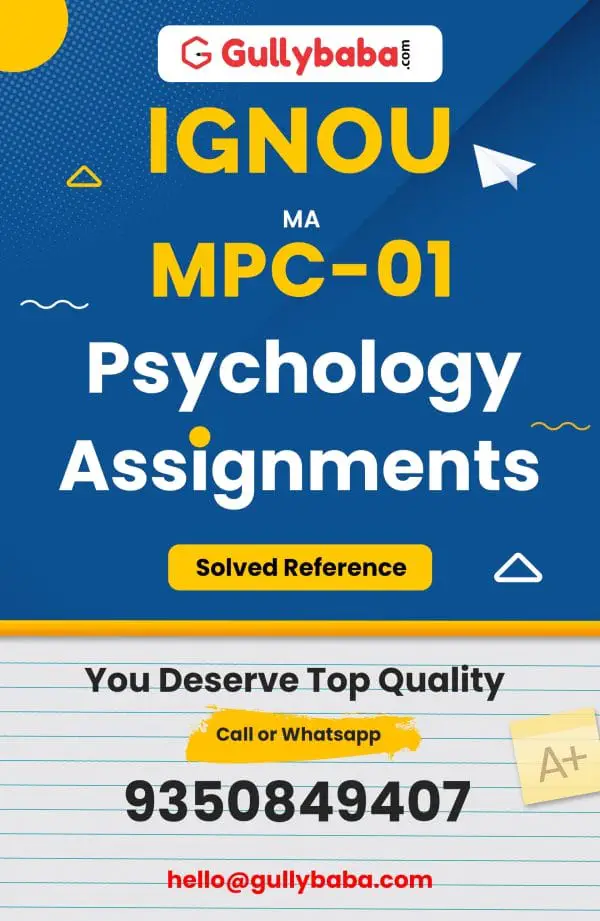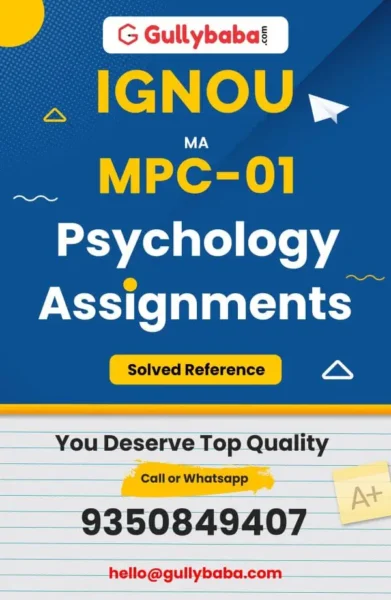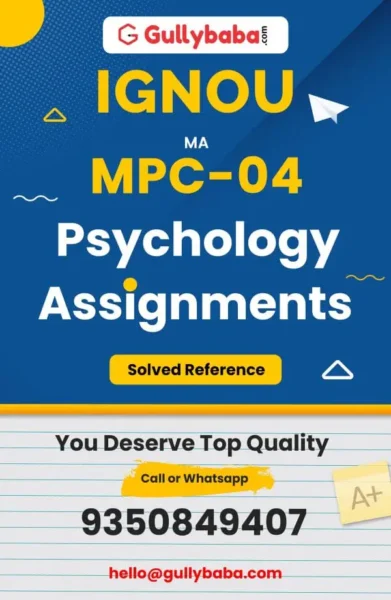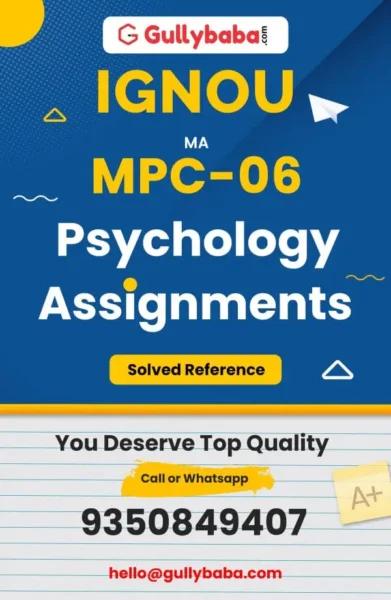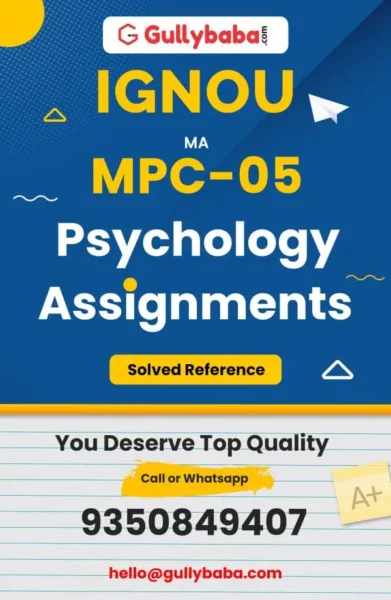PLEASE MATCH YOUR ASSIGNMENT QUESTIONS ACCORDING TO YOUR SESSION
IGNOU MPC-01 (July 2025 – January 2026) Assignment Questions
SECTION – A
Answer the following questions in 1000 words each.
1. Explain information processing in learning and memory.
2. Describe the meaning and stages of creativity. Explain the Investment and Confluence theory of creativity.
3. Explain Sternberg’s triarchic theory of intelligence.
SECTION – B
Answer the following questions in 400 words each.
4. Describe the Levels of processing model by Craik and Lockhart.
5. Explain the key issues in the study of cognitive psychology.
6. Describe the goals of research. Explain the research methods in cognitive psychology.
7. Describe the acquisition of second language.
8. Describe the perceptual, emotional and intellectual blocks to problem solving.
SECTION – C
Answer the following questions in 50 words each.
9. Cognitive neuroscience
10. Relationship between creativity and intelligence
11. Vernon’s hierarchical theory
12. Apraxia of speech
13. Functions of language
14. Limitations of Chomsky’s theory of language acquisition
15. Means end analysis as a problem solving technique
16. Types of problems
17. Newell’s approach to problem solving
18. Dyslexia
IGNOU MPC-01 (July 2024 – January 2025) Assignment Questions
SECTION – A
Answer the following questions in 1000 words each.
1. Describe the stage model of memory by Atkinson and Shiffrin.
2. Describe the different domains of cognitive psychology. Highlight the key issues in the study of cognitive psychology.
3. Explain the stages and strategies of problem solving.
SECTION – B
Answer the following questions in 400 words each.
4. Describe the Connectionist model of memory by Rumelhart ad McClelland.
5. Describe the aspects and stages of creativity.
6. Discuss Guilford’s structure-of-intellect theory.
7. Describe Spearman’s two-factor theory of intelligence.
8. Describe the environmental and cultural blocks to problem solving.
SECTION – C
Answer the following questions in 50 words each.
9. Levels-of-processing model
10. Hebb’s Law
11. Role of hippocampus in memory
12. Bloom’s taxonomy of cognitive domain
13. Principles of the information processing
14. Well-defined and Ill-defined problems
15. Relationship between creativity and intelligence
16. Benefits of multilingualism
17. Phonemes and morphemes
18. Problem space hypothesis



